The ”real” horses and their expressiveness – the Koniks at Wicken Fen
A dual process…
In February this year, just before the Corona took over the world – I was in UK. We had given two trainings, but also manged so squeeze in one visit to the Exmoors and one to Wicken Fen, to see horses who live more or less in a semi-feral way.
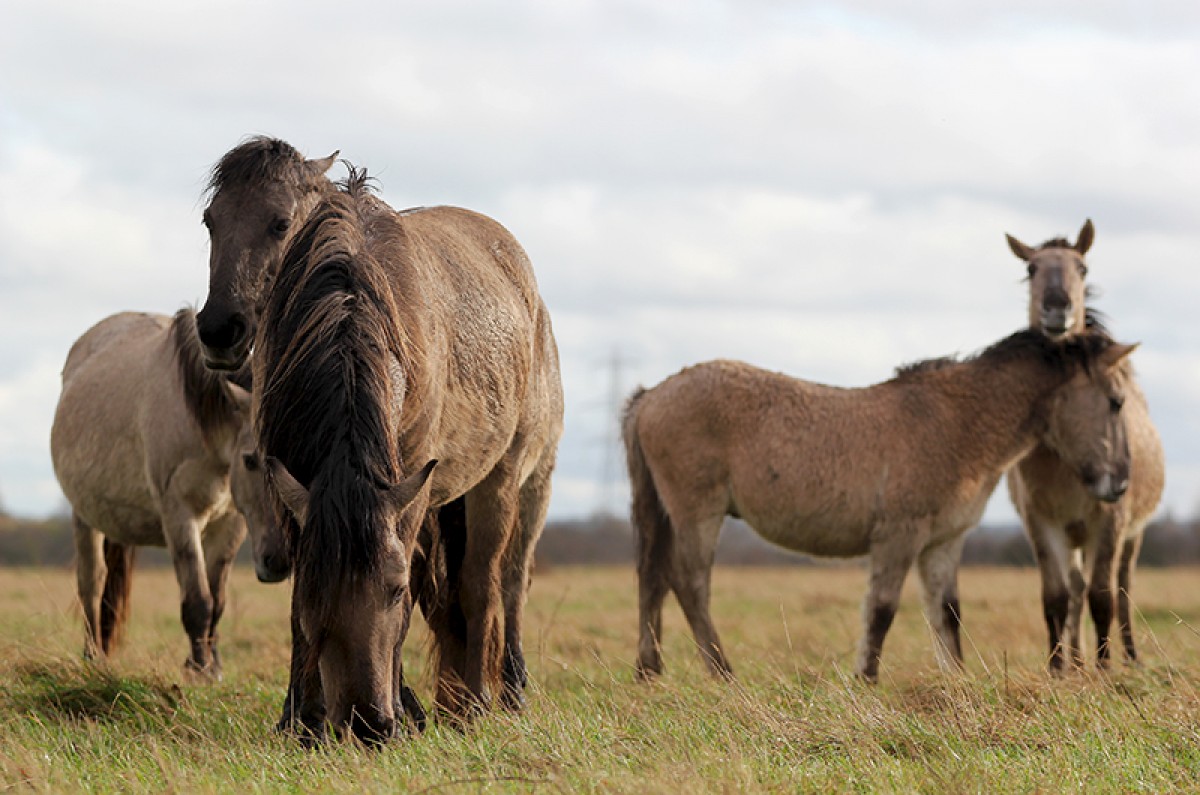 We went to Wicken Fen the last day before I returned to Sweden. I have waited to write much about that visit, because I did not know how to. Now I have been sitting with the dual processes that took place (or there were more than two – but these two signifies the main themes of my visit there).
We went to Wicken Fen the last day before I returned to Sweden. I have waited to write much about that visit, because I did not know how to. Now I have been sitting with the dual processes that took place (or there were more than two – but these two signifies the main themes of my visit there).
So – to start – at Wicken Fen – I had a lovely day – and a horrible day. And I learned a lot – mostly about myself… NOT from the horses teaching me anything in particular – but through my attempts at honesty, with myself. The horses only confirmed something I already knew and have seen elsewhere. Which I was delighted to get confirmed.
First there is the theme of the pure bliss of being amongst a horse herd of maybe around 60 Koniks. They have 3 larger herds of Koniks at Wicken Fen, and I honestly don’t remember how many horses there where in this particular herd. But it was a breeding herd – so there were mares and stallions in all ages – from the yearlings from last year – to the oldest members of them, I think she said they oldest were around 20 years of age.
Introducing the second theme. I was exhausted from having worked too much and too hard, together with traveling, and I had an infection waiting to break out – which I was not aware of. I went to Wicken Fen because I really wanted to, not listening to myself, not hearing myself on how drained and exhausted I was. Getting to Wicken Fen from Cambridge turned out to be a bit complicated, and the rain was pouring down on us. When we got there, I was in pain from an old hip injury, having made myself walk way too fast in Cambridge to catch a bus, carrying my load of camera equipment. So arriving at Wicken Fen I had already forced myself through mental and physical exhaustion and pain, and when the guide and my colleague set off to go and see the Koniks, I simply could not keep their pace, I lagged behind. Not on purpose, there where nothing else I could do. And enter emotional flashbacks, of exclusion and insignificance, of being redundant and unnecessary – unimportant – and left alone. I am already in a semi dissociative state, now it gets worse. Enter emotional pain. I lose sight of the other two, and I my flight response is also triggered. I become less and less aware of where I am. And it feels like it does not matter much. I have to focus hard to keep on following them in the direction I think they took when they disappeared out of my sight. What other flashbacks that hit me I am not going to discuss here. But I am more or less “lost” to reality, unsure of where I am, why I am there – and my fear is triggered. I do not know what is going to happen.
 Finally I see them again. First, I see the Koniks – and I snap out of myself. They are beautiful and I get my camera out. It is still pouring, but I can’t stop taking photos of them, I have to constantly wipe the lens from water and condensation. I see my colleague and my guide, and I head over to them. They are busy talking, filming. I keep on doing what I am doing – taking photos, observing the horses, what an opportunity! I feel very grateful. I keep on taking photos, from all kinds of angles. The horses are pretty calm, mostly they walk around, graze, rest, some of them are curiously making their way over to us. I do not know these horses. When I travel and meet different herds – firstly there are so many rules around what is allowed when you observe them are around them or meet them. I did not know what applied here, so I kept an eye on the guide to follow her example. Secondly – I like to approach horses slowly – letting them take in my as much as I take in them – whatever senses we as different species are using. Now I had lost my own “tempo” – and my sensory interaction with the horses and the environment and had instead adapted to the other two humans – were taking cues from them, more than from myself and the horses. I did not feel totally okay – I felt lost and un-grounded.
Finally I see them again. First, I see the Koniks – and I snap out of myself. They are beautiful and I get my camera out. It is still pouring, but I can’t stop taking photos of them, I have to constantly wipe the lens from water and condensation. I see my colleague and my guide, and I head over to them. They are busy talking, filming. I keep on doing what I am doing – taking photos, observing the horses, what an opportunity! I feel very grateful. I keep on taking photos, from all kinds of angles. The horses are pretty calm, mostly they walk around, graze, rest, some of them are curiously making their way over to us. I do not know these horses. When I travel and meet different herds – firstly there are so many rules around what is allowed when you observe them are around them or meet them. I did not know what applied here, so I kept an eye on the guide to follow her example. Secondly – I like to approach horses slowly – letting them take in my as much as I take in them – whatever senses we as different species are using. Now I had lost my own “tempo” – and my sensory interaction with the horses and the environment and had instead adapted to the other two humans – were taking cues from them, more than from myself and the horses. I did not feel totally okay – I felt lost and un-grounded.
In that state – I am very hypervigilant. My startle responses are high, I have tunnel vision and I shy from movements that goes on in my visual periphery – making me both restless, wanting to turn around and look all the time, but am also caught up in making myself seen as little as possible, so do not want to make any hasty movements, noise etc. This makes me “sense” danger. Not that there needs to be any. I am seemingly there – reacting to what happens there – but parts of me are somewhere else – in danger land, where no one can be trusted and anything can happen.
But. I am also aware of this. I am aware of not being totally present. That means I am also wary about other humans’ judgement of my “predicament” – I want to hide it. Because I also fear their judgment and ridicule. There is nothing to be afraid of, right?
I have “stuff” I do in these situations. I focus on grounding myself. Another part of me is still just enchanted by the Koniks. We humans move further into the group. The Koniks are scattered over a big field – and as horses live, they are mostly hanging out in their own family groups that exists within the larger herd. I am still not really talking to the other humans, not much. I focus on the horses, my observations and taking pictures. There are a few of them, mostly yearlings, coming up to us, usually I have no problem being sniffed by a horse, but I am not grounded, I tense up just a tiny bit, and I brace myself. What if they will bite me? My head is suddenly full of pictures again, that does not belong in this situation. I am aware of that. I can not command them away – so I have an inner dialogue. I relax as much as I can – I use breathing techniques, grounding techniques and stay open within to no let lose any meanness towards myself for not coping better this day.
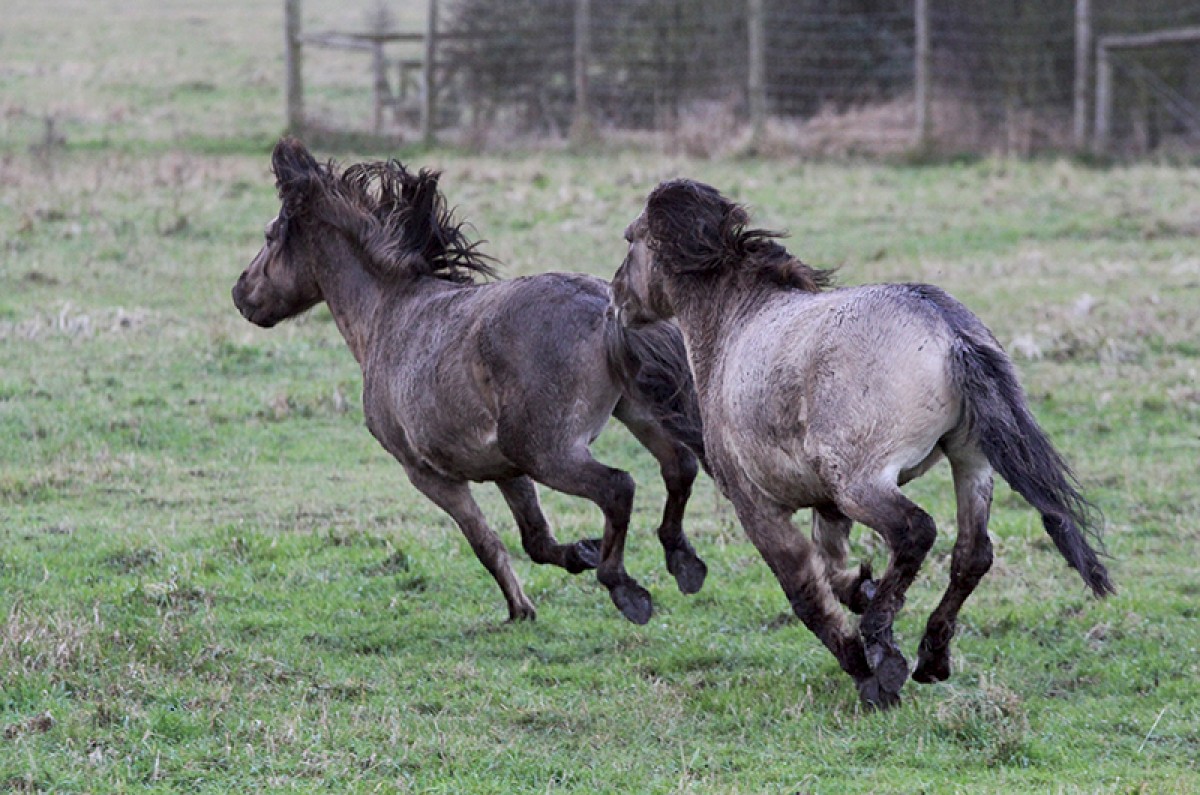 As we move even further into the field there is a change in energy in the herd. I am monitoring myself as good as I can – and am becoming a bit more aware of myself – I move more in synchrony with the horses around me – and blend better into their environment – it also makes it possible for me to start to ask some questions to the guide. I know I am not fully “there” – but it is becoming better by the minute.
As we move even further into the field there is a change in energy in the herd. I am monitoring myself as good as I can – and am becoming a bit more aware of myself – I move more in synchrony with the horses around me – and blend better into their environment – it also makes it possible for me to start to ask some questions to the guide. I know I am not fully “there” – but it is becoming better by the minute.
The parts of me that is so enjoying this visit are happy – the horses get more playful. Younger stallions wrestle each other, chase each other. Mares, older and pregnant – are doing their “self-care” routines” using bushes to scratch themselves, socializing, keeping an eye on their foals from last year, still nursing them. I am in love with their expressiveness! What I see is not what you see in a “normal” domestic herd, mostly. There is a lot of activity going on. The Koniks are fully embodied and “awake” (not dulled off, or “highly strung”). They do horse stuff. We humans seem mostly to just be some extra entertainment. There are some horses the guide has a more “tame” relationship with, they come and ask for scratches, funny enough, that is only stallions doing that, and mostly stallions from bachelor groups. I am still more busy with observing and taking pictures of all the activity (both high and low in intensity) that goes on around us and I watch in awe how the horses go about with their life. I am not really interested in scratching or socializing with any of them – I want to ingest all the “horse life” that I see. There is a qualitative difference between the social life in this herd, in these family groups, between these family groups and most horse groups/herds that I have visited. The more domestic, the more traditionally kept the horses I meet are – the less expressive they are, in a horse way. It is not that domestic horses, especially the ones living outdoors most of the time in bigger pastures with some natural diversity in “good” horse group, kept stable in the “right way”, are not moving around, showing playfulness, more natural grazing, resting – social behaviors, but there is a difference. These horses don’t know how NOT to be horses…
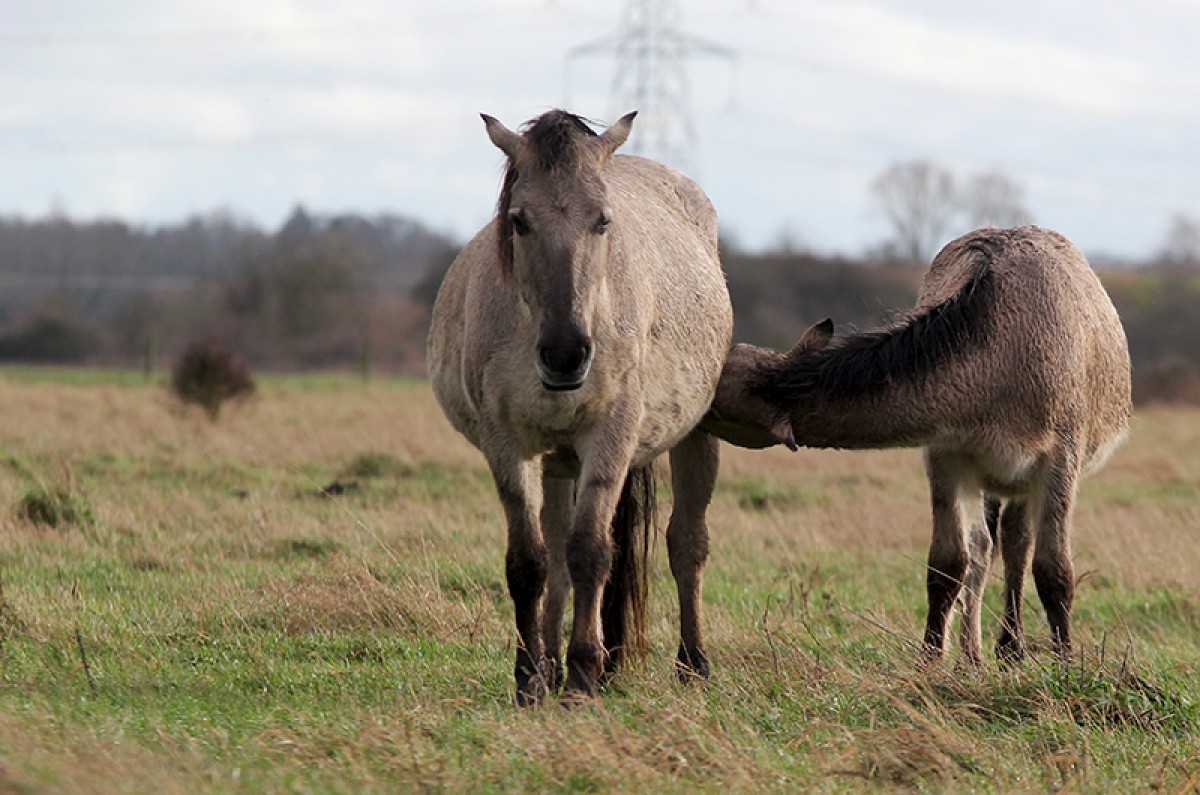 I have observed the same in other herds or family bands of feral or semi-feral horses, and as I said, to some extent in horses living a more natural horse life where they are allowed to solve their own problem, be curious, find out stuff, socialize etc. But it always makes me so happy to see it!
I have observed the same in other herds or family bands of feral or semi-feral horses, and as I said, to some extent in horses living a more natural horse life where they are allowed to solve their own problem, be curious, find out stuff, socialize etc. But it always makes me so happy to see it!
This goes back to ideas I have tossed around with for many years. Having had a livery yard where at least 200 horses (with their owners) have passed by for shorter or longer periods of time, all my travels to meet other horses, kept in a great variety of ways, visiting Mongolia, studying the “wild” Przewalski (Takhi in Mongolian), the semi-feral Mongolian horse, kept in groups without fences, meeting Koniks in the Netherlands, observing free ranging Mustangs, Quarter horses living in big groups, and all the stabled horses on all kinds of facilities from track systems, to active stables, to riding school where the horses very seldom were let out – I have seen so many different ways to keep horses – and I have learned so much from it. The more a horse has to adapt to a rigid way of keeping them (and training, handling them) – the less they resemble the horses I see in places like Wicken Fen (and the horses at Wicken Fen are still manged, just to a much less degree).
Why is this?
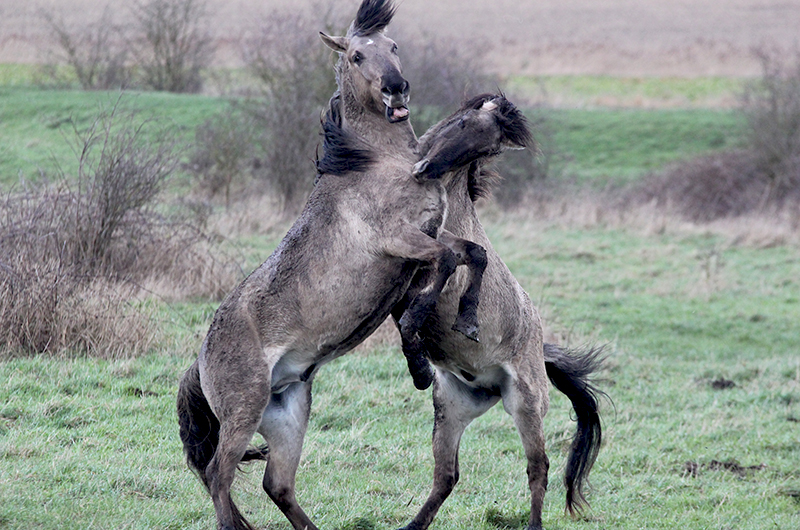
The answer to this I think in most cases is – NO.
We actually do not want horses to be horses, we do not want them to express themselves. We do in general not promote the social life of our horses – the social lives they have between each other. We as humans want to be part of their social life. We want to be the most important being in their lives. We are human-centered.
I think this is why I never found my way into becoming a horse trainer. I personally can not figure out how to train a horse without taking the horse out of him. I do experiment with it – but I admit – when it goes well – I am happy – when there is a conflict of interest – I don’t know what to do. It is not that I haven’t tried a multitude of training techniques and trainers, it is just that I always leave it – when I am asked to disregard the horse, or myself – I do like a cornered horse – I kick out – and walk away. I want to learn – I just don’t want to sell my soul doing it…
So far I haven’t found a horse trainer that can walk with me in this exploration. Where the horse is allowed to remain a horse, or, as in most domestic horse cases, is allowed to re-gain his own way of being a horse. There are always some strange explanations to as why we need to resort to doing this or that “to” the horse. And when it becomes “to” and not “with” – I lose interest.
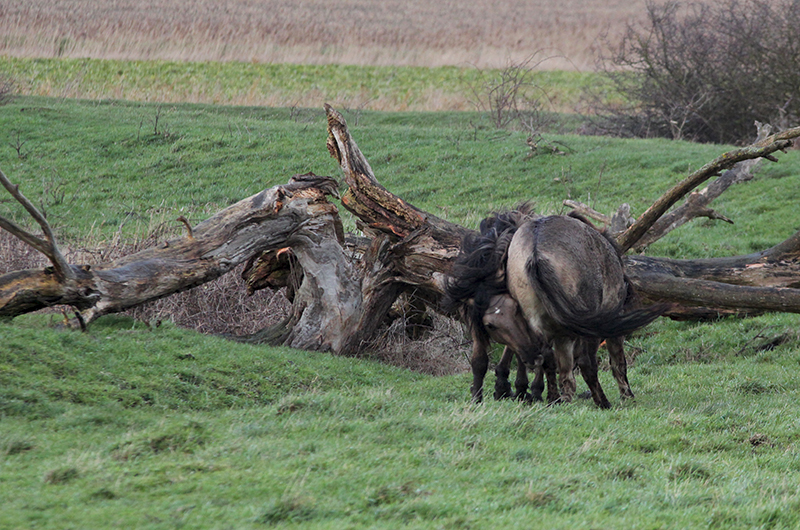 I know this partly comes from my own history of abuse. And as you can read above – I am still having flashbacks, I am still impacted by post trauma stress and dissociation, and maybe I always will be that – hopefully to a lesser extent. I know that when I am in a flashback, or just not really grounded – I can’t “see” properly, or for that matter, think properly. I mostly do really good with horses. For some reason I have learned to not fear them. But caught in a flashback, my fear makes it hard for me to see them as horses. Even if it is much easier to see them, than to see humans.
I know this partly comes from my own history of abuse. And as you can read above – I am still having flashbacks, I am still impacted by post trauma stress and dissociation, and maybe I always will be that – hopefully to a lesser extent. I know that when I am in a flashback, or just not really grounded – I can’t “see” properly, or for that matter, think properly. I mostly do really good with horses. For some reason I have learned to not fear them. But caught in a flashback, my fear makes it hard for me to see them as horses. Even if it is much easier to see them, than to see humans.
I was disappointed at myself at Wicken Fen. It was the first time in a very long time I had to work so hard to stay with them. And I know I did not manage all the time, or all they way. It made me feel disrespectful. One conclusion is that I shouldn’t have been there. Despite that – part of me is really happy about this experience.
I started in 2014 to write about what I am seeing, the differences I see in horses living in different management systems, the difference in the humans view on this. The knowledge we lack on horses – horses living as the ones in Wicken Fen, or in Mongolia, or in other nature reserve all over the world, or as free ranging horses, like the Mustangs in USA – in comparison to horses living the life most horses in traditional management systems are living in, that are more adopted to human needs than horses’ needs. This is affecting the horse. And if we keep on studying only highly manged horses – we will not know what a true horse is. And we will not understand them – and we will prefer them to not express themselves. I think most people find more horsey-horses and their ways of expressing themselves – to be overwhelming. The fight/fight/freeze/appease responses we see in horses – we mistake for “true” horse behaviors. It has similarities to true horse behaviors – but the quality, the energy, the freedom of expression – is very different. When I years back noticed that very few people who were very good riders could not distinguish stress from joy… or calmness from shut-down, or marish-ness from all kinds of ailments, boredom and frustration… the list is long of the confusion I saw/still see, and it makes me sad. If we cannot recognize emotions in horses – If we can’ t see what they say with their behaviors, not separate out a stress response, from basic emotions, not see the difference between natural behaviors and conditioned behaviors? How are we then to provide them with any quality of life?
 Horses are no put on earth to serve humans. The have the same rights as any other species to live according to what they need to thrive as a species. But I am a pragmatic person. The way forward is not to live in separation from horses, not to let them all out to live in nature reserves and the alike – it is to find ways to live in co-existence, where we take into account that they actually are horses, and where we stop trying to turn them into something we want them to be. Our best friend, our soul mate, or savior (the whole of humanity’s savior), or best exercise method, our best mindfulness practice… and instead develop “relationships” with them that are based on mutuality, reciprocity – recognizing what is similar between us – but even more – recognizing the differences between us. This can only be done on an individual level. A horse – is A horse. As in all categories we humans come up with to sort the world into – the differences within a category between the beings in the same category is usually bigger than the differences between individuals in similar categories… meaning a horse and a donkey e.g. can be more alike, have more in common, than a horse and a horse. Subjectivity matters. A lot.
Horses are no put on earth to serve humans. The have the same rights as any other species to live according to what they need to thrive as a species. But I am a pragmatic person. The way forward is not to live in separation from horses, not to let them all out to live in nature reserves and the alike – it is to find ways to live in co-existence, where we take into account that they actually are horses, and where we stop trying to turn them into something we want them to be. Our best friend, our soul mate, or savior (the whole of humanity’s savior), or best exercise method, our best mindfulness practice… and instead develop “relationships” with them that are based on mutuality, reciprocity – recognizing what is similar between us – but even more – recognizing the differences between us. This can only be done on an individual level. A horse – is A horse. As in all categories we humans come up with to sort the world into – the differences within a category between the beings in the same category is usually bigger than the differences between individuals in similar categories… meaning a horse and a donkey e.g. can be more alike, have more in common, than a horse and a horse. Subjectivity matters. A lot.
I am learning to become more and more aware of what I bring into the equation in my own relationship with “horses” (and other beings). I am also learning ways to deal with myself in different situations.  I have always been a good observer of “the other” – now I am upping my skills of observing (and changing myself) – to learn how I impact different situations, with different beings.
I have always been a good observer of “the other” – now I am upping my skills of observing (and changing myself) – to learn how I impact different situations, with different beings.
Life and “relationships” are not black and white – there are so many nuances, shades, perspectives… It is very easy to focus on the “other”, to find both the problem and the solution in the “other” – to try to change, teach, train, develop, entertain – the other, and forget about oneself.
When I started to look, truly look at myself – the hardest part was to not be so fearful of what I was going to find. I am more okay with it now – that is why I can write this. I know I am enough (most days). I know I am a decent horse person, with strength and weaknesses. I know I can learn more. I know I want to learn more. I know I can be the teacher of my strengths and a student of my weaknesses. That I sometimes struggle on a personal level, due to old traumas (and their impact on my life), does not disqualify the knowledge and experiences I have. I am slowly finding my own way of how I want to contribute to moving the knowledge on horses, hose welfare, horse-human interaction, etc, forward
 I know I do better, still, with horses than with humans. It wasn’t the horses at Wicken Fen that scared me. I scared myself. And then everything looked dangerous and awoke an old pain that kick started my old defenses – the only thing I could do was to work with myself to the best of my ability. The acceptance of saying – I am where I am – and not judge myself too harshly – opens up for reflection and change.
I know I do better, still, with horses than with humans. It wasn’t the horses at Wicken Fen that scared me. I scared myself. And then everything looked dangerous and awoke an old pain that kick started my old defenses – the only thing I could do was to work with myself to the best of my ability. The acceptance of saying – I am where I am – and not judge myself too harshly – opens up for reflection and change.
So – a dual process – a visit to the “real” horses – and a visit within – working with my fears – not of horses – but of what lives “within me” – at the same time… And maybe it is just this ability to be dually aware – that is the goal o fit all. To be able to stay in it. See it for what it is. And learn from it.
PS. I have tried to write about this visit several times. This is the only way I could write about it. Including myself in the “story”. Why? I am not sure. It feels more honest to let you know who the observer is, maybe… The perspective from which you see something, matters – a lot. Too. So by examining my own perspective during this visit, what impacted me, I feel more honest. Is it worth anything to anyone else, but me? I don’t know. That is not for me to decide.
Texts and pictures are copyright protected ©Katarina Lundgren, MiMer & Live the Change, 2020.
When you subscribe to the blog, we will send you an e-mail when there are new updates on the site so you wouldn't miss them.
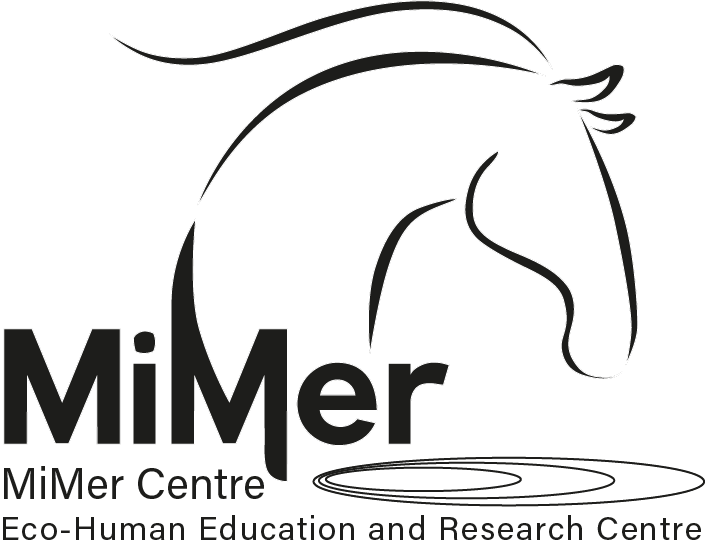
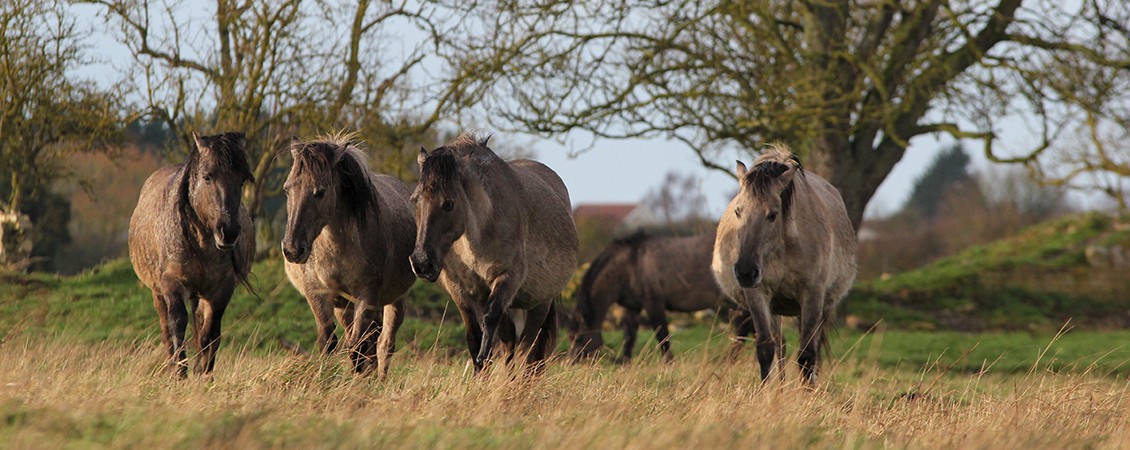
Comments 2
Thank you for writing such a vulnerable and open article about your experience. It encourages us all to be more self-aware and accepting of our internal experience. I can relate to your descriptions of your experience as well as your thoughts on comparing 'domestically' housed horses versus those that live more naturally. I consider equine facilities as being like minimum-maximum security prisons. Very few are designed to allow horses to live as horses. Horses who are allowed to make choices, live in the company of other horses, spend hours head down 'mowing the lawn' and who can choose to shelter or not shelter, respond to life very differently than those who don't have those freedoms.
Thank you Evelyn. Yes. That is what my observations tell me too. The more manged the environment is - the less "horse" they are. Some horses react to that by seeking human company, which we see as them being social. But if you are the only "attraction" or "entertainment" that happens during a day - and the rest of the day they live in a confined space with very limited choices? But it makes most humans feel good when their horse seek them out, showing signs of recognition.
For me the question is - how do we walk the fine line where we both help the horse to adapt to a life with humans - and let him keep the horse in him? It is a socialisation process, both of them. But often we start out with breaking the bond between the mare and the foal way too early - and then they do not have a solid ground to stand on, developmentally (besides that it has a huge impact on their digestive system - and as with humans, there is new and exiting research investigating the gut-brain axis - how the gut impacts not only physical well-being and health, but also mental well-being).
We want the horse to be so many things - that we keep on forgetting to look for who he actually is - I think. So we try to micro mange every aspect of his life, treating him as he is totally incapable of taking care of himself (which we at times sometimes set him up to be, keeping him in an environment where he can't solve anything). And this does not of course foster problem solving skills or decision making skills. And this is how many of us also wants our horses? Horses who do not take any initiatives? We want them to look to us for guidance, reassurance and safety... That is not an equal relationship/partnership in my eyes...
Thank you for acknowledging my vulnerability as well. I have been thinking a lot about it. I keep on talking about how important it is to see the horse as a subject... and then it dawned on me... well what about myself? I am not just any (horse) person. I am me. And that makes a whole lot of difference :-) . I study horse-human interaction - but it is really about A Horse- A person interaction...